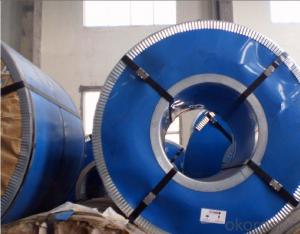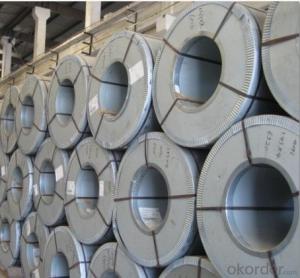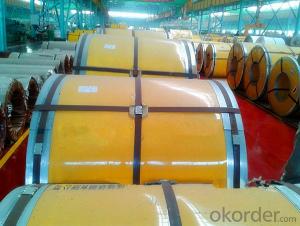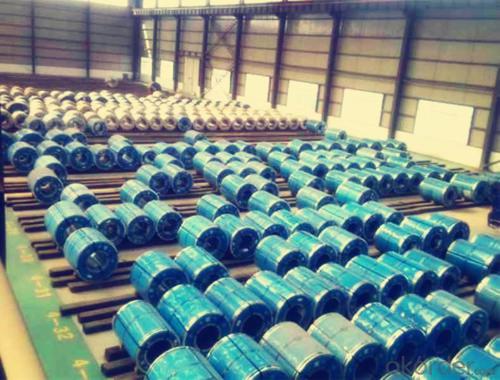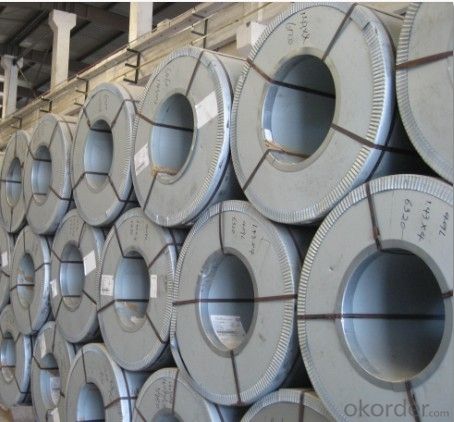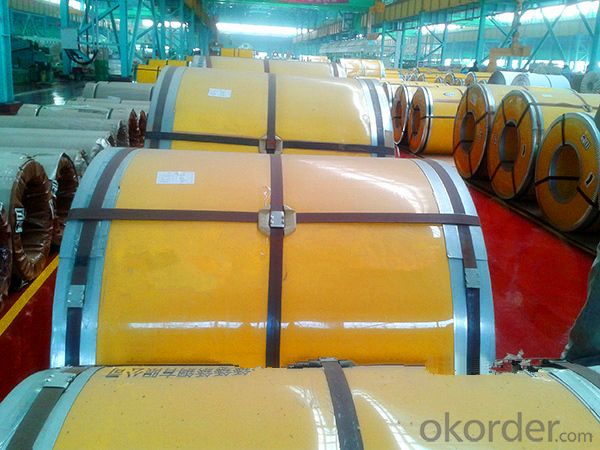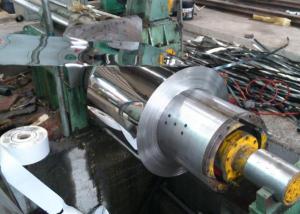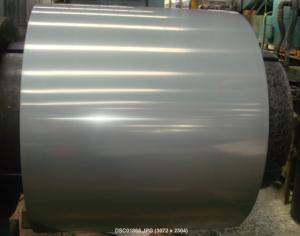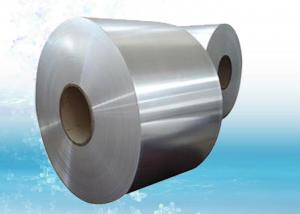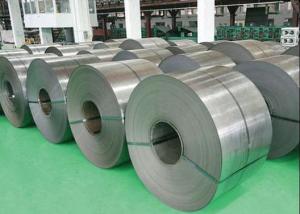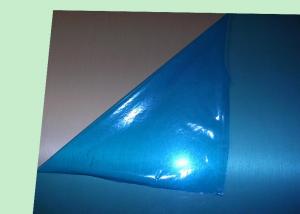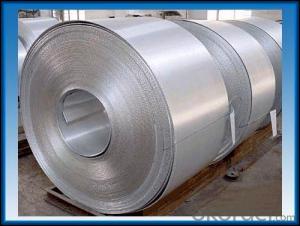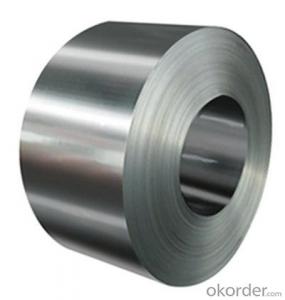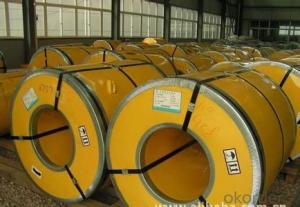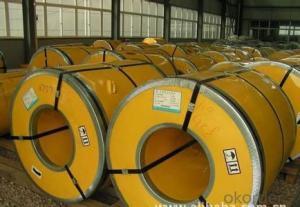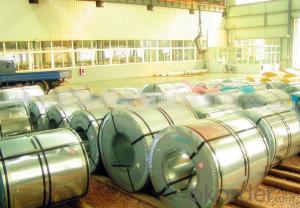Stainless Steel Coil Annealing and Pickling No.1 Finish Hot Rolled
- Loading Port:
- Guangzhou
- Payment Terms:
- TT OR LC
- Min Order Qty:
- 100 m.t.
- Supply Capability:
- 8000 m.t./month
OKorder Service Pledge
OKorder Financial Service
You Might Also Like
Hot / Cold Rolled Stainless Steel Coil
1. | Item | STAINLESS STEEL COIL | ||
2. | Standard | ASTM,AISI,GB,JIS,SUS,EN,DIN,etc. | ||
3. |
Material | 200 series | 300 series | 400 series |
201,202 | 300,301,304,304L,309S,310S,316Ti,316L, 317L,321,329,329LA,329LD | 409,410,430,430LX,600,601 | ||
4. |
Specification | Thickness | 0.1mm-200mm | |
Width | 1000mm-3000mm | |||
Length | 1m-12m | |||
5. | Surface | No.1,No.4,No.5,BA,2B,hair line,embossed,mirror finish,etc | ||
6. | Application | Stainless steel coils s are widely used in: 1:Chemical industry equipment,industrial tanks 2:Medical instruments,tableware,kitchen utensil,kitchen ware. 3:Architectural purpose,milk or food processing facilities. 4:Hospital equipment,interior exterior decoration for building 5:Architectural purposes,escalators,kitchen ware,vehicles. Or they can be made as your requirement. | ||
7. | Package | Standard export package. | ||
8. | Export to | Asia,Africa,Europe,Middle East,South and North America,Oceania,etc | ||
9. | Contact | please feel free to contact CNBM | ||
- Q: Can stainless steel strips be used in the semiconductor industry?
- Yes, stainless steel strips can be used in the semiconductor industry. Stainless steel is known for its excellent corrosion resistance, high strength, and durability, making it a suitable material for various applications in the semiconductor industry. Stainless steel strips are often used in the fabrication of semiconductor equipment, such as chambers, wafer carriers, and process tools, where they can withstand harsh environments and high temperatures. Additionally, stainless steel strips can be precision-engineered to meet specific requirements, ensuring dimensional accuracy and reliability in semiconductor manufacturing processes.
- Q: What are the common uses of stainless steel strips in the mining industry?
- The mining industry widely utilizes stainless steel strips due to their exceptional properties, making them suitable for various applications. Stainless steel strips have numerous uses in the mining industry, including: 1. Conveyor Systems: Stainless steel strips function as conveyor belts in many conveyor systems. They possess excellent resistance to corrosion, wear, and tear, making them ideal for transporting heavy materials and abrasive substances during mining operations. 2. Screening Equipment: Stainless steel strips are employed in constructing screens and sieves that separate minerals of different sizes. The durability and high strength of stainless steel ensure long-lasting performance in harsh mining environments. 3. Ventilation Systems: Efficient ventilation systems are crucial for mining operations to provide fresh air and remove harmful gases. Stainless steel strips are used in fabricating air ducts and exhaust pipes due to their corrosion resistance and ability to withstand high temperatures. 4. Pump Components: Pump components, including impellers and casings, are manufactured using stainless steel strips. These components come into contact with corrosive chemicals and abrasive slurries, but stainless steel's resistance to corrosion and erosion guarantees their durability. 5. Structural Support: Stainless steel strips are used in constructing various structures within mining facilities, such as platforms, walkways, and support beams. Their high strength and resistance to environmental factors make them suitable for supporting heavy equipment and providing safe access for workers. 6. Tank and Vessel Construction: Tanks and vessels used for storing and transporting liquids or hazardous substances in the mining industry often utilize stainless steel strips. Their corrosion resistance properties ensure the safety and integrity of the stored materials. 7. Welding and Fabrication: Stainless steel strips are frequently used for welding and fabrication purposes in mining operations. They can be easily formed, cut, and welded into different shapes and sizes, allowing for customized solutions for specific mining equipment or infrastructure. In conclusion, stainless steel strips have a wide range of applications in the mining industry due to their corrosion resistance, high strength, durability, and versatility. They play a critical role in constructing mining equipment, structures, and systems, ensuring efficient and reliable operations in challenging mining environments.
- Q: Are stainless steel strips suitable for brewery piping?
- Yes, stainless steel strips are suitable for brewery piping. Stainless steel is the preferred material for brewery piping due to its excellent corrosion resistance, durability, and hygienic properties. It is resistant to rust, stains, and chemical reactions, making it ideal for use in the brewing industry where contact with liquids and cleaning agents is frequent. The stainless steel used in brewery piping is typically of a high-grade, such as 304 or 316 stainless steel, which offers superior resistance to corrosion and pitting. This ensures that the pipes can withstand the harsh conditions and acidic or alkaline solutions commonly found in breweries, without deteriorating over time. Furthermore, stainless steel pipes are easy to clean and maintain, which is crucial in a brewery to prevent contamination and maintain the quality of the beer. The smooth surface of stainless steel prevents bacteria from adhering to the pipes, making it a hygienic choice for food and beverage industries. Overall, stainless steel strips are highly suitable for brewery piping due to their corrosion resistance, durability, and hygienic properties, making them a reliable and long-lasting choice for the brewing industry.
- Q: How do stainless steel strips resist staining?
- Stainless steel strips resist staining due to the presence of chromium in their composition. The chromium forms a protective layer on the surface of the steel, known as chromium oxide, which acts as a barrier against corrosion and stains. This layer prevents the steel from reacting with oxygen, moisture, and other corrosive substances, ensuring a long-lasting and stain-resistant quality.
- Q: How do stainless steel strips resist chemical exposure?
- Due to their unique composition and properties, stainless steel strips possess remarkable resistance against chemical exposure. Mainly comprised of iron, chromium, and other alloying elements like nickel and molybdenum, stainless steel forms a protective layer of chromium oxide on its surface. This chromium oxide layer acts as a barrier, effectively shielding the metal from chemical attack and preventing corrosion. The stability of this chromium oxide layer is exceptional, ensuring that the underlying metal remains unaffected by chemicals and corrosion. The self-healing and passive nature of stainless steel is what enables it to exhibit excellent resistance against a wide array of chemicals, including acids, alkalis, and corrosive substances. Furthermore, the chemical resistance of stainless steel strips can be further improved by modifying their composition or incorporating specific alloying elements. For instance, increasing the amount of nickel can bolster resistance against certain acids, while the addition of molybdenum can enhance resistance in chloride-containing environments. Moreover, the chemical resistance of stainless steel strips can be augmented through various surface treatments and coatings. These treatments encompass passivation, electropolishing, and the application of specialized coatings that offer enhanced protection against chemical exposure. In conclusion, the exceptional resistance to chemical exposure exhibited by stainless steel strips is a result of their inherent composition and the ability to customize their properties. This makes them highly suitable for a wide range of applications in industries such as chemical processing, pharmaceuticals, food processing, and more.
- Q: Are stainless steel strips suitable for architectural sculptures?
- Yes, stainless steel strips are suitable for architectural sculptures. Stainless steel is a highly versatile material that offers several advantages for creating architectural sculptures. Firstly, stainless steel is known for its durability and resistance to corrosion, making it ideal for outdoor sculptures that are exposed to various weather conditions. This ensures that the sculptures will maintain their aesthetic appeal and structural integrity over time. Additionally, stainless steel has a sleek and modern appearance, which can enhance the visual appeal of architectural sculptures. Its reflective surface can create interesting light and shadow effects, adding depth and dimension to the artwork. Stainless steel can also be easily manipulated and shaped into various forms, allowing artists to create intricate and complex designs. Moreover, stainless steel is a sustainable and eco-friendly material choice. It is 100% recyclable, meaning that it can be reused and repurposed, reducing waste and contributing to a greener environment. Overall, stainless steel strips are well-suited for architectural sculptures due to their durability, aesthetic appeal, versatility, and eco-friendliness.
- Q: Can stainless steel strips be used in marine applications?
- Indeed, the utilization of stainless steel strips in marine applications is possible. The exceptional corrosion resistance of stainless steel renders it a perfect choice for marine settings, where it endures constant exposure to saltwater and moisture. In marine applications, such as boat hardware, marine fittings, and structural components, stainless steel strips are frequently employed. These strips are specifically engineered to endure the rigorous conditions of the sea, including elevated levels of salt, humidity, and UV exposure. Moreover, stainless steel strips exhibit remarkable strength and durability, guaranteeing their ability to endure the challenging conditions of marine environments for an extended duration.
- Q: Can stainless steel strips be used in aerospace applications?
- Stainless steel strips have proven to be highly applicable in aerospace settings. This material is renowned for possessing exceptional resistance against corrosion, as well as displaying remarkable strength and high-temperature endurance. Consequently, stainless steel is deemed appropriate for a wide range of aerospace elements. Aircraft fuselages, wings, and engine components are frequently constructed using this type of steel. The utilization of stainless steel strips ensures reliable support, durability, and protection against the extreme conditions typically encountered in aerospace environments. Furthermore, the ability of stainless steel to endure substantial levels of stress, coupled with its lightweight characteristics, further enhances its aptness for aerospace purposes.
- Q: Can stainless steel strips be used for magnetic applications?
- Yes, stainless steel strips can be used for magnetic applications. However, it should be noted that stainless steel is not inherently magnetic and requires specific treatments or alloys to become magnetic.
- Q: Can stainless steel strips be used in nuclear applications?
- Yes, stainless steel strips can be used in nuclear applications. Stainless steel is known for its excellent corrosion resistance, high strength, and heat resistance, making it suitable for various nuclear applications. It is commonly used in the construction of reactor components, fuel handling systems, and storage containers due to its durability and ability to withstand extreme conditions. Additionally, stainless steel's non-magnetic properties make it ideal for certain nuclear applications where magnetic interference needs to be minimized.
Send your message to us
Stainless Steel Coil Annealing and Pickling No.1 Finish Hot Rolled
- Loading Port:
- Guangzhou
- Payment Terms:
- TT OR LC
- Min Order Qty:
- 100 m.t.
- Supply Capability:
- 8000 m.t./month
OKorder Service Pledge
OKorder Financial Service
Similar products
Hot products
Hot Searches
Related keywords

